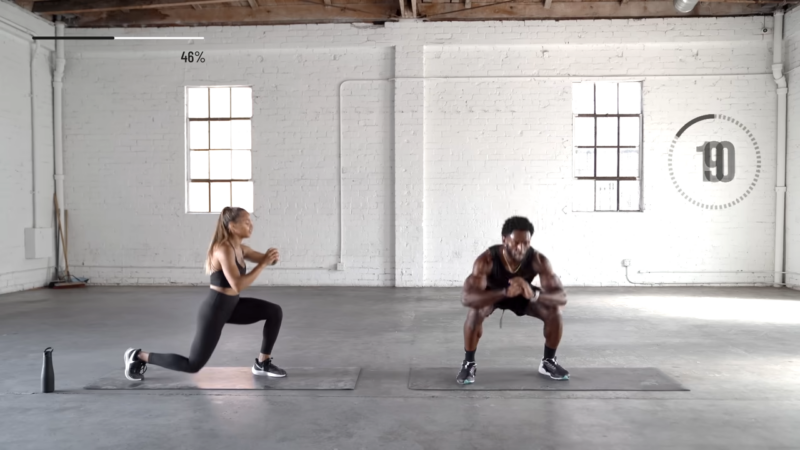It’s time to ditch the dull exercises and shake things up with interval training! This fun and effective way to work out is perfect for burning fat, building endurance, and boosting your overall fitness, all in less time. Let’s chat about what it is, why it works, and how you can get started.
Table of Contents
ToggleWhat is Interval Training?
Interval training involves alternating periods of intense exercise with periods of rest or lower-intensity exercise. These intervals can vary in length and intensity, but the basic idea is to push your body hard for a short period and then allow it to recover.
This approach can be applied to various forms of exercise, including running, cycling, swimming, and even bodyweight workouts.
Key Components
- High-Intensity Intervals: These are short bursts of exercise performed at maximum or near-maximum effort. The goal is to work at a level where talking becomes difficult, if not impossible.
- Recovery Intervals: These periods allow your body to recover and prepare for the next high-intensity interval. They can be complete rest or lower-intensity activities like walking or slow jogging.
- Work-to-Rest Ratio: This ratio determines how long you work versus how long you rest. A common ratio for beginners is 1:2, meaning one minute of intense exercise followed by two minutes of recovery.
Why Is It Effective
Interval training offers a range of benefits that make it a highly efficient and effective workout method.
Increased Calorie Burn
The high-intensity nature of interval training means you burn more calories in a shorter time compared to steady-state exercise. This phenomenon, known as excess post-exercise oxygen consumption (EPOC), keeps your metabolism elevated even after your workout is over, leading to additional calorie burn.
Improved Cardiovascular Health
The alternating periods of high and low intensity challenge your heart and lungs, improving cardiovascular fitness. Over time, your heart becomes more efficient at pumping blood, and your lungs become better at oxygen exchange.
Time Efficiency
Interval training can fit into busy schedules, as effective workouts can be completed in as little as 20-30 minutes. The intensity of the exercise compensates for the shorter duration, making it an excellent option for those with limited time.
Versatility and Variety
Interval training can be tailored to any fitness level and preference. Whether you prefer running, cycling, swimming, or strength training, you can incorporate intervals into your routine. The variety also helps prevent boredom and keeps you motivated.
Enhanced Fat Loss
Interval training has been shown to be particularly effective for fat loss. The combination of high-intensity exercise and EPOC helps in reducing body fat while preserving lean muscle mass.
How to Get Started

Ready to give interval training a try? Here’s a step-by-step guide to help beginners get started safely and effectively.
Consult Your Doctor
Before starting any new exercise program, especially one as demanding as interval training, it’s essential to consult with a healthcare professional. This is particularly important if you have any pre-existing medical conditions or concerns.
Choose Your Activity
Decide on the type of exercise you enjoy and want to incorporate into your interval training. This could be anything from running and cycling to body weight exercises or swimming. The key is to choose something you enjoy, as this will help you stick with it.
Determine Your Fitness Level
Understanding your current fitness level will help you design an interval training program that’s challenging yet manageable. If you’re new to exercise, start with shorter, less intense intervals and gradually increase the intensity and duration.
Plan Your Intervals
Start with a simple work-to-rest ratio, such as 1:2. For example, you might sprint for 30 seconds and then walk for 60 seconds. As you become more comfortable, you can adjust the ratio to 1:1 or even 2:1.
Warm-Up and Cool Down

Always start your workout with a warm-up to prepare your muscles and cardiovascular system. This can include dynamic stretches or light aerobic activity like jogging. Similarly, end your workout with a cool-down period, which can involve static stretching and deep breathing.
Monitor Your Intensity
During high-intensity intervals, aim to work at an intensity that feels challenging. You should be able to say a few words, but not carry on a conversation. During recovery intervals, slow down enough to catch your breath and prepare for the next round.
Listen to Your Body
Pay attention to how your body feels during and after workouts. It’s normal to feel tired, but if you experience pain, dizziness, or shortness of breath, stop exercising and consult a healthcare professional. As your fitness improves, gradually increase the duration and intensity of your high-intensity intervals.
You can also decrease the duration of your recovery periods to make your workouts more challenging.
Sample Interval Training Workouts for Beginners
Here are a few beginner-friendly interval training workouts you can try:
| Workout Type | Warm-up | Interval | Recovery | Repeat | Cool-down |
|---|---|---|---|---|---|
| Running Intervals | 5 minutes of walking or light jogging | 30 seconds of sprinting | 60 seconds of walking | 8-10 times | 5 minutes of walking |
| Cycling Intervals | 5 minutes of easy pedaling | 1 minute of fast cycling (high resistance) | 2 minutes of slow cycling (low resistance) | 6-8 times | 5 minutes of easy pedaling |
| Bodyweight Circuit | 5 minutes of light cardio | 30 seconds of jumping jacks 30 seconds of squats 30 seconds of push-ups 30 seconds of high knees | 30 seconds of rest | 3-4 times (4 intervals) | 5 minutes of stretching |
- Set specific, achievable goals for your interval training.
- Keep a workout journal or use a fitness app to track your intervals, intensity, and progress.
- Mix your workouts to keep things interesting and prevent plateaus. Try different exercises, change your intervals, or incorporate different types of training, like strength training or flexibility exercises.
- Stay consistent. Aim to do interval training 2–3 times a week, giving your body enough time to recover between sessions.
- Fuel your body. Eat a balanced diet rich in whole foods and stay hydrated throughout the day.
In Summary
Interval training offers a fun, efficient, and effective way to improve your fitness, burn calories, and break through exercise plateaus.
Related Posts:
- How Long Does It Take to Train for a Half Marathon?
- How Can You Start a Career as a Running Coach?
- How Far Is a Half Marathon? Everything You Need to Know
- 25 Simple Running Motivation Tips To Get You Moving
- Should You Run on an Empty Stomach? Pros and Cons Explained
- Lower Back Pain While Running? Here's What You Need to Know







